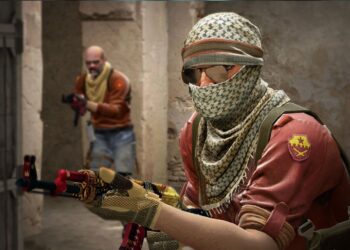When Counter-Strike 2 launched, players were immediately drawn to the sharper graphics, smoother mechanics, and updated gameplay. But beyond new maps and tighter competitive play, another story quietly developed, one that isn’t about kills or rankings, but about value. Skins, the flashy cosmetic items for weapons, have grown into something far bigger than mere decoration. Skins have turned into more than just cosmetics; they now have real-world value, connecting gaming with financial opportunity in ways few expected.”
From rare rifles to iconic knives, these skins have real-world worth, traded on platforms and in communities much like stocks or collectibles. Over time, this shift gave rise to a space where players could show off their style, trade items, and even try their hand at a kind of playful, game-based finance.
Platforms That Add Security
As the value of skins increased, so did the need for trustworthy spaces to trade and engage with them. A safe CS2 gambling site offers players a secure way to enjoy skin-based games and trading. These platforms stand out by combining entertainment with protection: fair odds, fast payouts, generous bonuses, and reliable account security make it easier to participate without constantly worrying about fraud or lost items. For many users, that combination of fun and safety makes the experience far more appealing than navigating informal marketplaces alone.
How the Skin Market Took Shape
The rise of skins as tradable assets traces back to CS: GO, when Valve introduced loot cases. Players could unlock randomized cosmetics, some of which were extremely rare. Soon, it became clear that certain items, like the AWP Dragon Lore, weren’t just visually impressive; they carried serious monetary value. Secondary marketplaces quickly developed, allowing cosmetics to be treated like tradable assets with real-world worth.
Online platforms helped the market grow even faster. Trades that might have taken days in the real world could now happen instantly. Prices fluctuated constantly based on rarity, demand, and hype. Before long, skins had evolved into a fast-moving, high-stakes digital economy.
Why Skins Act Like Currency
At first glance, it might seem odd to treat virtual gun wraps as money. But skins have several qualities that mimic financial assets. They’re limited in number, can be traded, and often retain their value over time. A rare knife, for instance, can be swapped for multiple lesser items or sold for real-world currency.

Showing off rare skins also carries a certain social weight. Showing off an exclusive skin during a clutch round isn’t just about appearance; it signals prestige. That cultural value drives demand just as much as rarity. In regions where traditional banking isn’t always accessible, skins even provide a practical way to exchange value digitally.
The Parallels With Cryptocurrency
CS2 skins share a lot with cryptocurrency. Both are scarce digital assets with markets influenced by hype and speculation. Both experience rapid value swings, and both teach players, often implicitly, about liquidity, supply, and demand.
The main difference is that skins are controlled by a central authority. Bitcoin or Ethereum operate on decentralized networks, while CS2 skins are ultimately under Valve’s control. Still, secondary markets run on their own, with players buying, selling, and holding rare skins while betting on which items will rise in value.
Community and Culture
What really drives the skin economy is community. When streamers feature rare skins on their broadcasts, it naturally generates excitement and draws attention. Discord trading communities give collectors a space to trade items, share tips, and celebrate unique finds. Even professional esports players can influence which skins become popular. When a popular player uses a particular skin in a tournament, interest can spike almost instantly.
This sense of community turns trading into more than transactions; it becomes part of the gaming experience. Personal expression, peer recognition, and even friendly competition all play a role in the market’s vibrancy.
Risks in the Digital Skin Economy
Of course, this ecosystem isn’t risk-free. Skins with high value can draw scammers, account thieves, and fraudulent trades. On some platforms, weak protections leave players exposed to risk. And because Valve controls the game’s infrastructure, policy changes could instantly affect item value, making the market fragile.
Keeping things safe and well-supervised is really important.. A safe, well-regulated platform lets them enjoy trading and the excitement of skins without worrying about scams or fraud.. A safe, well-regulated platform lets them enjoy trading and the excitement of skins without worrying about scams or fraud. Looking Ahead
Even with the risks, the skin market keeps growing. Players are still very interested in rare skins, and trading platforms have become easier to use and more dependable. As gaming increasingly explores blockchain and NFTs, digital items are likely to take on even more financial value.
Conclusion
CS2 skins are a clear example of how the line between playing a game and handling real-world value has become blurred. What began as cosmetic flair evolved into a digital economy where items can be traded, collected, and even wagered on secure platforms. Even with some risks, the marketplace gives players a fun way to learn about real-world financial ideas
The growth of gaming has shown that tiny design details can create major changes. CS2 skins have turned simple visuals into tradable assets and made the game’s economy more dynamic.






















































